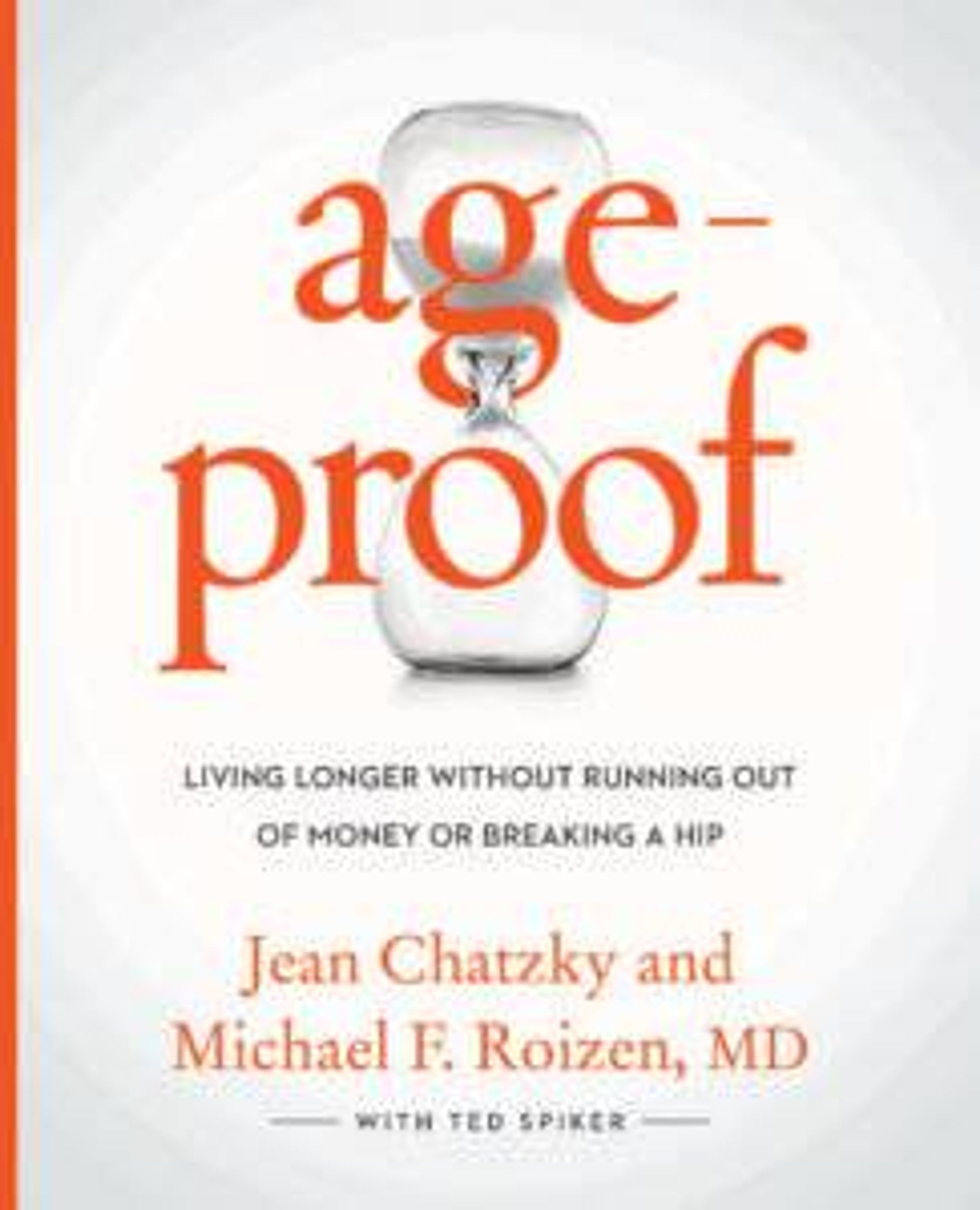Best Fixes for Debt and Savings Woes
Advice from the new Jean Chatzky/Dr. Michael Roizen book, 'Ageproof'
(This is excerpted from the book Ageproof by Jean Chatzky & Michael F. Roizen, MD, with Ted Spiker. Copyright (c) 2017 by Jean Chatzky and Michael F. Roizen, M.D. Reprinted with permission of Grand Central Life & Style. All rights reserved.)
You hear this advice over and over: if you start saving for retirement at the age of 20, you’ll be set for life. That’s because the power of compound interest can take your measly savings as a young adult and turn it into millions by the time you’re ready to retire. Great advice. IF YOU’RE 20!
But what if you didn’t get (or take) that advice when you were younger and you don’t want to work at Taco Bell until you’re 93? (Not that there’s anything wrong with Taco Bell.) What if you’re in any kind of less-than-optimum financial situation — like climbing out of debt or digging out from bankruptcy? Is it too late to save more, spend less or make money?
It’s not.
While you can’t technically make up for lost time when it comes to the exponential rate of growth of that compound interest, you can strategize about the best ways to erase mistakes and make that murky-as-mud financial outlook look clearer than Caribbean blue.
Here are two Fix It! Ideas that can help:
Fix It! No. 1: I have too much debt
No matter if your debt is the size of a small hill or Mount Everest, you just need to keep plugging away. This is how:
Write down all the debt you have and the interest rate of each piece of debt. Then put them in order — highest interest rate at the top, lowest at the bottom.

Reduce those rates where you can by refinancing mortgages, student loans, car loans, etc. Transfer debt on higher-rate credit cards to lower-rate cards.
Now put all your extra monthly budget toward the highest-interest debt. Wipe out the big interest rates first. With the first one done, move to the next and the next.
Don’t use credit cards while paying down debt.
If your credit score is above 760 and you have more credit cards than you need, close the cards as you go through the process. You should only have enough cards that you’re spending 30 percent of your limit each month, then paying that amount off. If you need to build your credit score, you can leave the cards open, as long as you don’t use them. Then close one every six months, unless you’re applying for a mortgage or car loan; in that case, keep them open until that’s complete.
Fix It! No. 2: I’m getting a late start saving for retirement
The biggest financial regret most people have is that they didn’t start saving earlier for retirement. The later you are in the game, the more you’re going to have to swing the pendulum from consuming today to saving for tomorrow. And if you haven’t started and you’re in your early 50s, you should understand that this is not something you can fix by skipping the coffees and bypassing the manicures.
Let’s say you’re 55, earn $80,000, get 2 percent annual raises and have $80,000 already saved. If you save 15 percent annually for the next 10 years and earn 6 percent on your investments a year, you’ll end up with just under $320,000 at age 65. But if you can get yourself to save 20 percent of your income instead, you’ll increase what’s in your retirement coffers to $380,000.
How are you going to come up with that money?
Use catch-up contribution provisions to enable your extra savings to grow tax-free. Once you hit the big 5-0, you can contribute more to your retirement accounts each year — and you should. An extra $6,000 in your 401(k) or 403(b), $3,000 in your SIMPLE (Savings Incentive Match Plan for Employees) IRA and $1,000 in your traditional IRA or Roth annually can go a long way. And if you have a Health Savings Account, you can kick in an extra $1,000 a year once you turn 55. (Note: you and your spouse can make separate catch-up contributions.) These are current catch-up contributions limits; they will likely increase over time.
Downshift. Pronto. In order to stash away those big numbers, you’re going to want to trim your cost of living significantly, sooner rather than later. Look at the big items: housing, transportation, education, even health care. You want to sacrifice quantity without quality.
Make a plan to work longer. Remember the 55-year-old who had $80,000 in retirement funds and was getting 2 percent raises a year? Boosting his savings rate from 15 percent to 20 percent will bring his total by age 65 to $380,000. But if he enjoys his work enough to continue for three more years, he’ll have $515,000. Plus, during those years he wouldn’t be withdrawing from his 401(k) and his Social Security benefit could grow. For every year between age 62 and 70 that you delay starting your benefits, they grow at a rate of about 8 percent guaranteed.

